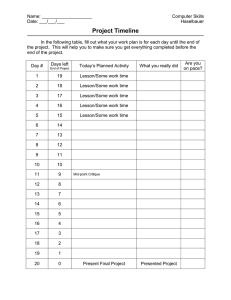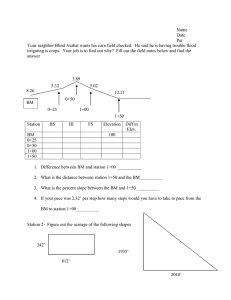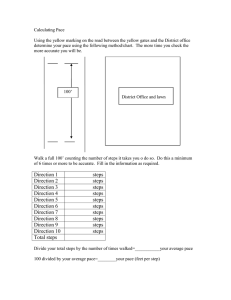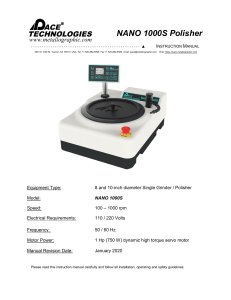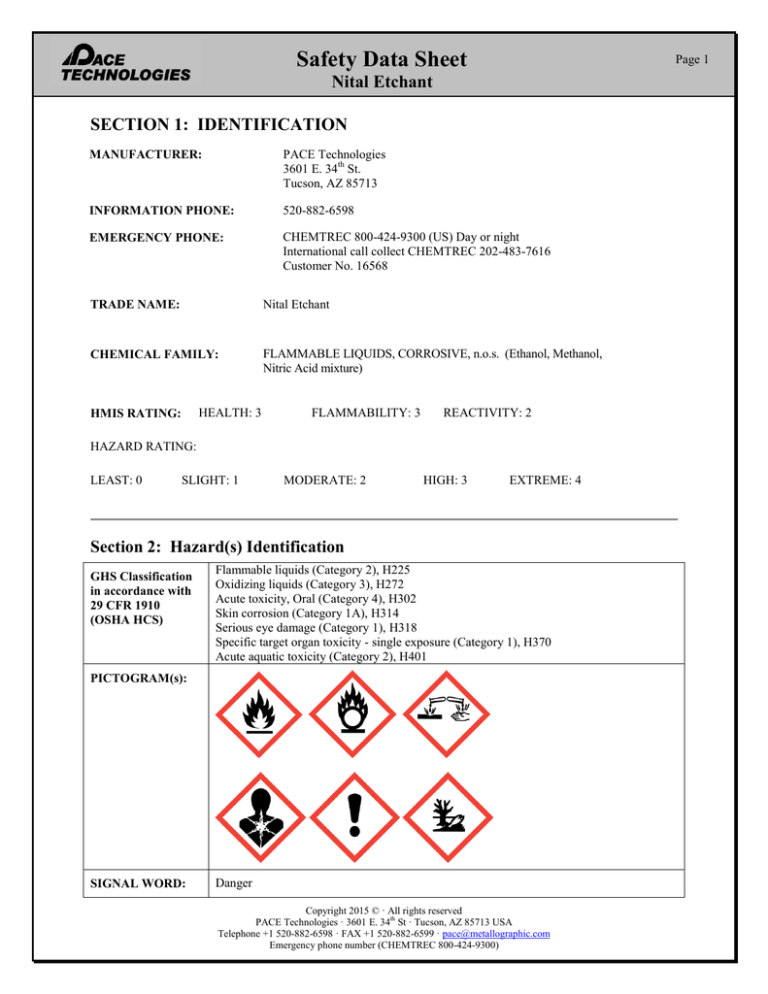
Safety Data Sheet
Page 1
Nital Etchant
SECTION 1: IDENTIFICATION
MANUFACTURER:
PACE Technologies
3601 E. 34th St.
Tucson, AZ 85713
INFORMATION PHONE:
520-882-6598
EMERGENCY PHONE:
CHEMTREC 800-424-9300 (US) Day or night
International call collect CHEMTREC 202-483-7616
Customer No. 16568
TRADE NAME:
Nital Etchant
CHEMICAL FAMILY:
FLAMMABLE LIQUIDS, CORROSIVE, n.o.s. (Ethanol, Methanol,
Nitric Acid mixture)
HEALTH: 3
HMIS RATING:
FLAMMABILITY: 3
REACTIVITY: 2
HAZARD RATING:
LEAST: 0
SLIGHT: 1
MODERATE: 2
HIGH: 3
EXTREME: 4
Section 2: Hazard(s) Identification
GHS Classification
in accordance with
29 CFR 1910
(OSHA HCS)
Flammable liquids (Category 2), H225
Oxidizing liquids (Category 3), H272
Acute toxicity, Oral (Category 4), H302
Skin corrosion (Category 1A), H314
Serious eye damage (Category 1), H318
Specific target organ toxicity - single exposure (Category 1), H370
Acute aquatic toxicity (Category 2), H401
PICTOGRAM(s):
SIGNAL WORD:
Danger
Copyright 2015 © · All rights reserved
PACE Technologies · 3601 E. 34th St · Tucson, AZ 85713 USA
Telephone +1 520-882-6598 · FAX +1 520-882-6599 · pace@metallographic.com
Emergency phone number (CHEMTREC 800-424-9300)
Safety Data Sheet
Nital Etchant
HAZARD
STATEMENTS:
PRECAUTIONARY
STATEMENTS:
Hazard Statement(s):
H225- Highly Flammable liquid and vapor
H272 - May intensify fire; oxidizer
H302- Harmful if swallowed
H314- Causes severe skin burns and eye damage
H318 - Causes serious eye damage
H370- Causes damage to organs
H401- Toxic to aquatic life
Precautionary Statement(s):
Preventions: Under development
P210- Keep away from heat/sparks/open flames/hot surfaces. — No smoking.
P220- Keep/Store away from clothing and combustible materials. P221- Take any
precaution to avoid mixing with combustibles, strong bases, metallic powders, carbides,
hydrogen sulfide, turpentine, and combustible organics.
P221- Take any precaution to avoid mixing with combustibles
P233- Keep container tightly closed.
P240- Ground/bond container and receiving equipment.
P241- Use explosion-proof electrical/ventilating/lighting equipment.
P242- Use only non-sparking tools.
P243- Take precautionary measures against static discharge.
P260- Do not breathe dust/fume/gas/mist/vapors/spray.
P264- Wash hands thoroughly after handling.
P270- Do not eat, drink or smoke when using this product.
P273- Avoid release to the environment.
P280- Wear protective gloves/protective clothing/eye protection/face protection.
Response:
P301+P312: IF SWALLOWED: call a POISON CENTER or doctor/physician IF you feel
unwell.
P303+P361+P353- IF ON SKIN (or hair): Remove/Take off Immediately all contaminated
clothing. Rinse SKIN with water/shower.
P304+P340- IF INHALED: Remove victim to fresh air and Keep at rest in a position
comfortable for breathing.
P305+-P351+P338- IF IN EYES: Rinse cautiously with water for several minutes. Remove
contact lenses, if present and easy to do. Continue rinsing.
P307+P311P310- IF INHALED: Remove victim to fresh air and Keep at rest in a position comfortable
for breathing.
P312- Call a POISON CENTER or doctor/physician if you feel unwell.
P321- Specific treatment (see Section 4 SDS).
P330-P363- Wash contaminated clothing before reuse.
P363- Avoid release to the environment.
P370+P378- In case of fire: Use dry sand, dry chemical or alcohol-resistant foam for
extinction.
Storage:
P403+P235- Store in a well-ventilated place. Keep cool.
P405- Store locked up.
Disposal:
P501- Dispose of contents/container to Federal, State and Local Regulations.
Copyright 2015 © · All rights reserved
PACE Technologies · 3601 E. 34th St · Tucson, AZ 85713 USA
Telephone +1 520-882-6598 · FAX +1 520-882-6599 · pace@metallographic.com
Emergency phone number (CHEMTREC 800-424-9300)
Page 2
Safety Data Sheet
Nital Etchant
Emergency Overview
-------------------------POISON! DANGER! CORROSIVE. LIQUID AND MIST CAUSE SEVERE
BURNS TO ALL BODY TISSUE. OXIDIZER. CONTACT WITH OTHER
MATERIAL MAY CAUSE FIRE. MAY BE FATAL IF SWALLOWED.
HARMFUL IF INHALED. INHALATION MAY CAUSE LUNG AND
TOOTH DAMAGE. MAY BE FATAL IF SWALLOWED. HARMFUL IF
INHALED OR ABSORBED THROUGH SKIN. VAPOR HARMFUL.
FLAMMABLE! AFFECTS CENTRAL NERVOUS SYSTEM. MAY CAUSE
BLINDNESS. CANNOT BE MADE NONPOISONOUS. CAUSES
IRRITATION TO SKIN, EYES AND RESPIRATORY TRACT. MAY
AFFECT LIVER, BLOOD, REPRODUCTIVE SYSTEM. -------------------------------------------------------------------------------------------------Health Rating: 3 - Severe (Poison)
Flammability Rating: 3 - Severe (Flammable)
Reactivity Rating: 2 - Moderate
Contact Rating: 4 - Extreme (Corrosive and Life)
Lab Protective Equip: GOGGLES & SHIELD; LAB COAT & APRON; VENT
HOOD; PROPER GLOVES; CLASS B EXTINGUISHER
Storage Color Code: White (Corrosive) and Red (Flammable)
--------------------------------------------------------------------------------------------------Potential Health Effects
---------------------------------Nitric acid is extremely hazardous; it is corrosive, reactive, an oxidizer, and a
poison.
Inhalation:
Corrosive! May cause irritation of the nose, throat, and respiratory tract including
coughing and choking. Higher concentrations or prolonged exposure to vapors of
nitric acid may lead to pneumonia or pulmonary edema.
Ingestion:
Corrosive. May cause immediate pain and burns of the mouth, throat, esophagus
and gastrointestinal tract.
Skin Contact:
Corrosive! May cause redness, pain, and severe skin burns.
Eye Contact:
Corrosive! Vapors are irritating and may cause damage to the eyes. Contact may
cause severe burns and permanent eye damage.
Chronic Exposure:
Long-term exposure to concentrated vapors may cause erosion of teeth. Long
term exposures seldom occur due to the corrosive properties of the acid.
Prolonged skin contact causes drying and cracking of skin. May affect the
nervous system. May affect liver, blood, reproductive system. Continued
ingestion of small amounts could result in blindness
Copyright 2015 © · All rights reserved
PACE Technologies · 3601 E. 34th St · Tucson, AZ 85713 USA
Telephone +1 520-882-6598 · FAX +1 520-882-6599 · pace@metallographic.com
Emergency phone number (CHEMTREC 800-424-9300)
Page 3
Safety Data Sheet
Page 4
Nital Etchant
eye problems or impaired liver or kidney function
Aggravation of Pre-existing Conditions:
Persons with pre-existing skin disorders, eye disease, impaired liver, kidney
function or cardiopulmonary diseases may be more susceptible to the effects of
this substance.
Section 3: Composition/Information on Ingredients
HAZARD INGREDIENTS
CHEMICAL
CAS NUMBER
% PRESENT
Hazardous
Ethyl Alcohol
64-17-5
85-98%
Yes
Methyl Alcohol
67-56-1
1 - 5%
Yes
Isopropyl Alcohol
67-63-0
1 - 5%
Yes
7697-37-2
1 - 8%
Yes
Nitric Acid
Section 4: First-Aid Measures
Immediate first aid treatment reduces the health effects of this substance.
Inhalation:
Remove to fresh air. If not breathing, give artificial respiration. If breathing is
difficult, give oxygen. Call a physician.
Ingestion:
DO NOT INDUCE VOMITING! Give large quantities of water or milk if
available. Never give anything by mouth to an unconscious person. Get medical
attention immediately.
Skin Contact:
In case of contact, immediately flush skin with plenty of water for at least 15
minutes while removing contaminated clothing and shoes. Wash clothing before
reuse. Call a physician.
Eye Contact:
Immediately flush eyes with plenty of water for at least 15 minutes, lifting lower
and upper eyelids occasionally. Get medical attention immediately.
Section 5: Fire-Fighting Measures
Fire:
Flash point: 13C (55F) CC
Autoignition temperature: 422C (792F)
Flammable limits in air % by volume:
Copyright 2015 © · All rights reserved
PACE Technologies · 3601 E. 34th St · Tucson, AZ 85713 USA
Telephone +1 520-882-6598 · FAX +1 520-882-6599 · pace@metallographic.com
Emergency phone number (CHEMTREC 800-424-9300)
Safety Data Sheet
Page 5
Nital Etchant
lel: 3.3; uel: 19
Flammable liquid and vapor!
Dangerous fire hazard when exposed to heat or flame.
Explosion:
Above flash point, vapor-air mixtures are explosive within flammable limits noted above. Vapors
can flow along surfaces to distant ignition source and flash back. Sealed containers may rupture
when heated. Sensitive to static discharge.
Fire Extinguishing Media:
Water spray, dry chemical, alcohol foam, or carbon dioxide. Water may be ineffective.
Special Information:
In the event of a fire, wear full protective clothing and NIOSH-approved self-contained breathing
apparatus with full facepiece operated in the pressure demand or other positive pressure mode.
Water spray can be used to extinguish fires and cool fire-exposed containers. Water may be used
to flush spills away from exposures and to dilute spills to non-flammable mixtures.
Section 6: Accidental Release Measures
Ventilate area of leak or spill. Remove all sources of ignition. Wear appropriate
personal protective equipment as specified in Section 8. Isolate hazard area. Keep
unnecessary and unprotected personnel from entering. Contain and recover liquid
when possible. Use non-sparking tools and equipment. Collect liquid in an
appropriate container or absorb with an inert material (e. g., vermiculite, dry sand,
earth), and place in a chemical waste container. Do not use combustible materials,
such as saw dust. Do not flush to sewer! US Regulations (CERCLA) require
reporting spills and releases to soil, water and air in excess of reportable
quantities. The toll free number for the US Coast Guard National Response
Center is (800) 424-8802.
Section 7: Handling and Storage
Protect against physical damage. Store in a cool, dry well-ventilated location,
away from any area where the fire hazard may be acute. Outside or detached
storage is preferred. Separate from incompatibles. Containers should be bonded
and grounded for transfers to avoid static sparks. Storage and use areas should be
No Smoking areas. Use non-sparking type tools and equipment, including
explosion proof ventilation. Containers of this material may be hazardous when
empty since they retain product residues (vapors, liquid); observe all warnings
and precautions listed for the product.
Copyright 2015 © · All rights reserved
PACE Technologies · 3601 E. 34th St · Tucson, AZ 85713 USA
Telephone +1 520-882-6598 · FAX +1 520-882-6599 · pace@metallographic.com
Emergency phone number (CHEMTREC 800-424-9300)
Safety Data Sheet
Nital Etchant
Section 8: Exposure Controls/Personal Protection
Airborne Exposure Limits:
Denatured Alcohol:
- OSHA Permissible Exposure Limit (PEL):
1000 ppm (TWA) for ethyl alcohol
400 ppm (TWA) for isopropyl alcohol
200 ppm (TWA) for methyl alcohol
- ACGIH Threshold Limit Value (TLV):
1000 ppm (TWA), A4 - not classifiable as a human carcinogen for ethyl alcohol
200 ppm (TWA), 400 ppm (STEL), A4 - not classifiable as a human carcinogen
for isopropyl alcohol
200 ppm (TWA), 250 ppm (STEL) skin, for methyl alcohol
For Nitric Acid:
OSHA Permissible Exposure Limit (PEL):
2 ppm (TWA)
ACGIH Threshold Limit Value (TLV):
2 ppm (TWA); 4 ppm (STEL)
Ventilation System:
A system of local and/or general exhaust is recommended to keep employee
exposures below the Airborne Exposure Limits. Local exhaust ventilation is
generally preferred because it can control the emissions of the contaminant at its
source, preventing dispersion of it into the general work area. Please refer to the
ACGIH document, Industrial Ventilation, A Manual of Recommended Practices,
most recent edition, for details.
Personal Respirators (NIOSH Approved):
If the exposure limit is exceeded and engineering controls are not feasible, wear a
supplied air, full-facepiece respirator, airlined hood, or full-facepiece selfcontained breathing apparatus. Breathing air quality must meet the requirements
of the OSHA respiratory protection standard (29CFR1910.134). Canister-type
respirators using sorbents are ineffective.
Skin Protection:
Wear impervious protective clothing, including boots, gloves, lab coat, apron or
coveralls, as appropriate, to prevent skin contact.
Eye Protection:
Use chemical safety goggles and/or a full face shield where splashing is possible.
Maintain eye wash fountain and quick-drench facilities in work area.
Copyright 2015 © · All rights reserved
PACE Technologies · 3601 E. 34th St · Tucson, AZ 85713 USA
Telephone +1 520-882-6598 · FAX +1 520-882-6599 · pace@metallographic.com
Emergency phone number (CHEMTREC 800-424-9300)
Page 6
Safety Data Sheet
Nital Etchant
Section 9: Physical and Chemical Properties
Appearance:
Clear to pale yellow solution.
Odor:
Suffocating, acrid with whiskey-like odor.
Solubility:
No information found
Density:
No information found
pH:
No information found.
% Volatiles by volume @ 21C (70F):
100
Boiling Point:
78C (172F) (ethanol)
Melting Point:
-114C (-173F) (ethanol)
Vapor Density (Air=1):
1.6 (ethanol)
Vapor Pressure (mm Hg):
40 @ 19C (66F) (ethanol)
Evaporation Rate (BuAc=1):
ca. 1.4 (CCl4=1) (ethanol)
Section 10: Stability and Reactivity
Stability:
Stable under ordinary conditions of use and storage.
Hazardous Decomposition Products:
Carbon dioxide and carbon monoxide may form along with toxic nitrogen oxides
fumes and hydrogen nitrate when heated to decomposition.
Hazardous Polymerization:
Will not occur.
Incompatibilities:
Strong oxidants, silver salts, acid chlorides, alkali metals, metal hydrides,
hydrazine, and many other substances. Strong bases, metallic powders, carbides,
hydrogen sulfide, turpentine, and combustible organics.
Conditions to Avoid:
Heat, flames, ignition sources and incompatibles.
Copyright 2015 © · All rights reserved
PACE Technologies · 3601 E. 34th St · Tucson, AZ 85713 USA
Telephone +1 520-882-6598 · FAX +1 520-882-6599 · pace@metallographic.com
Emergency phone number (CHEMTREC 800-424-9300)
Page 7
Safety Data Sheet
Page 8
Nital Etchant
Section 11: Toxicological Information
For Nitric Acid: Investigated as a mutagen and reproductive effector.
For Denatured Alcohol:
Toxicological Data:
Ethyl alcohol: oral rat LD50: 7060 mg/kg; inhalation rat LC50: 20,000 ppm/10H;
Irritation data, eye, rabbit: 500 mg/24H moderate; Investigated as a tumorigen,
mutagen, reproductive effector. Methyl alcohol: oral rat LD50: 5628 mg/kg;
inhalation rat LC50: 64000 ppm/4H; skin rabbit LD50: 15800 mg/kg; Irritation
data,skin,rabbit: 20 mg/24H, Moderate; Investigated as a tumorigen, mutagen,
reproductive effector. Isopropyl alcohol: oral rat LD50: 5045 mg/kg; skin rabbit
LD50: 12.8 gm/kg; inhalation, rat: 16,000 ppm 8 hr. Investigated as a mutagen,
tumorigen, reproductive effector.
Reproductive Toxicity:
Ethanol has been linked to birth defects in humans.
Carcinogenicity:
Ethanol has been linked to cancer in humans. Chronic ethanol ingestion is
associated with liver cancer. Most industrial ethanol contains denaturants that
render it undesirable to drink.
--------\Cancer Lists\--------------------------------------------------------NTP Carcinogen--Ingredient
Known
Anticipated
IARC Category
-------------------------------------------------------------Nitric Acid (7697-37-2)
No
No
None
Water (7732-18-5)
No
No
None
Ethyl Alcohol (64-17-5)
No
No
None
Methyl Alcohol (67-56-1)
No
No
None
Isopropyl Alcohol (67-63-0)
No
No
3
Section 12: Ecological Information
Environmental Fate:
Following data for ethanol: When released into the soil, this material is expected
to readily biodegrade. When released into the soil, this material is expected to
leach into groundwater. When released into the soil, this material is expected to
quickly evaporate. When released into water, this material is expected to readily
biodegrade. When released into water, this material may evaporate to a moderate
extent. This material is not expected to significantly bioaccumulate. When
released into the air, this material is expected to be readily degraded by reaction
with photochemically produced hydroxyl radicals. When released into the air, this
material is expected to be readily removed from the atmosphere by dry and wet
deposition. When released into the air, this material is expected to have a half-life
between 1 and 10 days.
Copyright 2015 © · All rights reserved
PACE Technologies · 3601 E. 34th St · Tucson, AZ 85713 USA
Telephone +1 520-882-6598 · FAX +1 520-882-6599 · pace@metallographic.com
Emergency phone number (CHEMTREC 800-424-9300)
Safety Data Sheet
Page 9
Nital Etchant
Environmental Toxicity:
This material is not expected to be toxic to aquatic life. The LC50/96-hour values
for fish are over 100 mg/l.
Section 13: Disposal Considerations
Whatever cannot be saved for recovery or recycling should be handled as
hazardous waste and sent to a RCRA approved incinerator or disposed in a RCRA
approved waste facility. Processing, use or contamination of this product may
change the waste management options. State and local disposal regulations may
differ from federal disposal regulations. Dispose of container and unused contents
in accordance with federal, state and local requirements.
Section 14: Transport Information
Domestic (Land, D.O.T.)
----------------------Proper Shipping Name: FLAMMABLE LIQUIDS, CORROSIVE, N.O.S.
(denatured alcohol, nitric acid)
Hazard Class: 3,8
UN/NA: UN 2924
Packing Group: II
Label Codes: 3,8
NMFC: 45615-11
Shipping Class CL125
International (Air, I.C.A.O.)
----------------------------Proper Shipping Name: FLAMMABLE LIQUIDS, CORROSIVE, N.O.S.
(denatured alcohol, nitric acid)
Hazard Class: 3,8
UN/NA: UN 2924
Packing Group: II
Label Codes: 3,8
Section 15: Regulatory Information
--------\Chemical Inventory Status - Part 1\-------------------------------Ingredient
TSCA EC
Japan Australia
----------------------------------------------- ---- --- ----- --------Nitric Acid (7697-37-2)
Yes Yes
Yes
Yes
Copyright 2015 © · All rights reserved
PACE Technologies · 3601 E. 34th St · Tucson, AZ 85713 USA
Telephone +1 520-882-6598 · FAX +1 520-882-6599 · pace@metallographic.com
Emergency phone number (CHEMTREC 800-424-9300)
Safety Data Sheet
Page 10
Nital Etchant
Water (7732-18-5)
Ethyl Alcohol (64-17-5)
Methyl Alcohol (67-56-1)
Isopropyl Alcohol (67-63-0)
Yes Yes
Yes Yes
Yes Yes
Yes Yes
Yes
Yes
Yes
Yes
Yes
Yes
Yes
Yes
--------\Chemical Inventory Status - Part 2\---------------------------------Canada-Ingredient
Korea DSL
NDSL Phil.
----------------------------------------------- ----- ------ ----Nitric Acid (7697-37-2)
Yes
Yes
No
Yes
Water (7732-18-5)
Yes
Yes
No
Yes
Ethyl Alcohol (64-17-5)
Yes
Yes
No
Yes
Methyl Alcohol (67-56-1)
Yes
Yes
No
Yes
Isopropyl Alcohol (67-63-0)
Yes
Yes
No
Yes
--------\Federal, State & International Regulations - Part 1\--------------SARA 302------SARA 313----Ingredient
RQ
TPQ
List Chemical Catg.
----------------------------------------- ---------- ------------Nitric Acid (7697-37-2)
1000 1000
Yes
No
Water (7732-18-5)
No
No
No
No
Ethyl Alcohol (64-17-5)
No
No
No
No
Methyl Alcohol (67-56-1)
No
No
Yes
No
Isopropyl Alcohol (67-63-0)
No
No
Yes
No
--------\Federal, State & International Regulations - Part 2\---------------RCRA-TSCAIngredient
CERCLA
261.33
8(d)
----------------------------------------- ---------------Nitric Acid (7697-37-2)
1000
No
No
Water (7732-18-5)
No
No
No
Ethyl Alcohol (64-17-5)
No
No
No
Methyl Alcohol (67-56-1)
5000
U154
No
Isopropyl Alcohol (67-63-0)
No
No
No
Chemical Weapons Convention: No
TSCA 12(b): No
SARA 311/312: Acute: Yes
Chronic: Yes Fire: No
Reactivity: Yes
(Mixture / Liquid)
CDTA: No
Pressure: No
Australian Hazchem Code: 2PE and 2[S]E
Poison Schedule: S5, S6
WHMIS:
This MSDS has been prepared according to the hazard criteria of the Controlled
Products Regulations (CPR) and the MSDS contains all of the information
required by the CPR.
Copyright 2015 © · All rights reserved
PACE Technologies · 3601 E. 34th St · Tucson, AZ 85713 USA
Telephone +1 520-882-6598 · FAX +1 520-882-6599 · pace@metallographic.com
Emergency phone number (CHEMTREC 800-424-9300)
Safety Data Sheet
Page 11
Nital Etchant
Section 16. Other Information
Label First Aid:
In case of contact, immediately flush eyes or skin with plenty of water for at least 15 minutes
while removing contaminated clothing and shoes. Wash clothing before reuse. If swallowed, DO
NOT INDUCE VOMITING. Give large quantities of water. Never give anything by mouth to an
unconscious person. If inhaled, remove to fresh air. If not breathing, give artificial respiration. If
breathing is difficult, give oxygen. In all cases call a physician.
Product Use:
Laboratory Reagent.
Disclaimer:
PACE Technologies, Inc. provides the information contained herein in good faith but
makes no representation as to its comprehensiveness or accuracy. This document is
intended only as a guide to the appropriate precautionary handling of the material by a
properly trained person using this product. Individuals receiving the information must
exercise their independent judgment in determining its appropriateness for a particular
purpose. PACE TECHNOLOGIES, INC. MAKES NO REPRESENTATIONS OR
WARRANTIES, EITHER EXPRESS OR IMPLIED, INCLUDING WITHOUT
LIMITATION ANY WARRANTIES OF MERCHANTABILITY, FITNESS FOR A
PARTICULAR PURPOSE WITH RESPECT TO THE INFORMATION SET FORTH
HEREIN OR THE PRODUCT TO WHICH THE INFORMATION REFERS.
ACCORDINGLY, PACE TECHNOLOGIES, INC. WILL NOT BE RESPONSIBLE FOR
DAMAGES RESULTING FROM USE OF OR RELIANCE UPON THIS
INFORMATION.
DATE PREPARED: 2/09/2015
Copyright 2015 © · All rights reserved
PACE Technologies · 3601 E. 34th St · Tucson, AZ 85713 USA
Telephone +1 520-882-6598 · FAX +1 520-882-6599 · pace@metallographic.com
Emergency phone number (CHEMTREC 800-424-9300)

